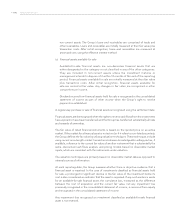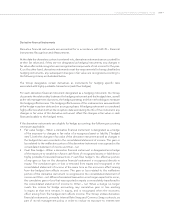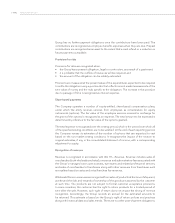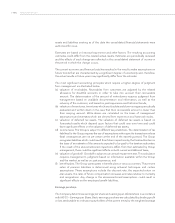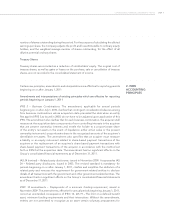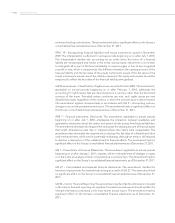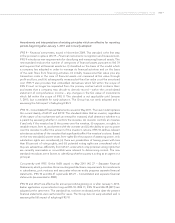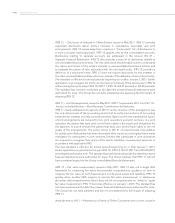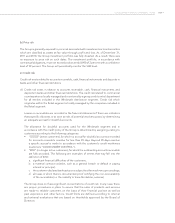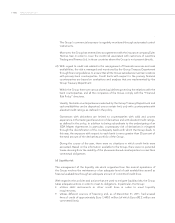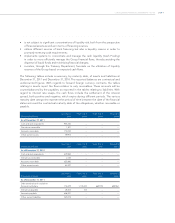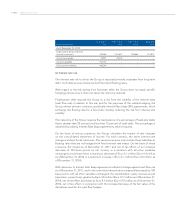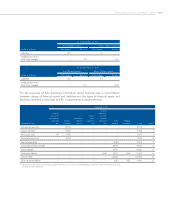LensCrafters 2011 Annual Report Download - page 199
Download and view the complete annual report
Please find page 199 of the 2011 LensCrafters annual report below. You can navigate through the pages in the report by either clicking on the pages listed below, or by using the keyword search tool below to find specific information within the annual report.
| 123 >CONSOLIDATED FINANCIAL STATEMENTS - NOTES
Amendments and interpretations of existing principles which are effective for reporting
periods beginning after January 1, 2011 and not early adopted
IFRS 9 – Financial instruments, issued in November 2009. This standard is the first step
in the process to replace IAS 39 – Financial instruments: recognition and measurement.
IFRS 9 introduces new requirements for classifying and measuring financial assets. The
new standard reduces the number of categories of financial assets pursuant to IAS 39
and requires that all financial assets be: (i) classified on the basis of the model which
a company has adopted in order to manage its financial activities and on the basis
of the cash flows from financing activities; (ii) initially measured at fair value plus any
transaction costs in the case of financial assets not measured at fair value through
profit and loss; and (iii) subsequently measured at their fair value or at the amortized
cost. IFRS 9 also provides that embedded derivatives which fall within the scope of
IFRS 9 must no longer be separated from the primary contract which contains them
and states that a company may decide to directly record – within the consolidated
statement of comprehensive income – any changes in the fair value of investments
which fall within the scope of IFRS 9. The standard is not applicable until January
1, 2015 , but is available for early adoption. The Group has not early adopted and is
assessing the full impact of adopting IFRS 9.
IFRS 10 – Consolidated Financial Statements, issued in May 2011. The new model replaces
the current duality of IAS 27 and SIC12. The standard states that an investor, regardless
of the nature of its involvement with an entity (the investee), shall determine whether it is
a parent by assessing whether it controls the investee. An investor controls an investee
if and only if the investor has (i) the power over the investee, (ii) exposure, or rights, to
variable returns from its involvement with the investee and (iii) the ability to use its power
over the investee to affect the amount of the investor’s returns. IFRS 10 defines relevant
activities as activities of the investee that significantly affect the investee’s returns. Based
on the new standard (i) power arises from rights (for the purpose of assessing power, only
substantive rights are considered), (ii) there are possibilities of having power with less
than 50 percent of voting rights, and (iii) potential voting rights are considered only if
they are substantive, differently from IAS 27, under which only potential voting rights that
are currently exercisable or convertible were relevant to determining control. The new
standard introduces some factors to identifying whether a party is acting as an agent or a
principal.
Concurrently with IFRS 10 the IASB issued in May 2011 IAS 27 – Separate Financial
Statements, which prescribes the accounting and disclosure requirements for investments
in subsidiaries, joint ventures and associates when an entity prepares separate financial
statements. IFRS 10 and IAS 27 supersede IAS 27 – Consolidated and separate financial
statements (as amended in 2008).
IFRS 10 and IAS 27 are effective for annual periods beginning on or after January 1, 2013.
Earlier application is permitted so long as IFRS 10, IFRS 11, IFRS 12 and IAS 28 (2011) are
adopted at the same time. The standard has not been endorsed at the date the present
financial statements were authorized for issue. The Group has not early adopted and is
assessing the full impact of adopting IFRS 10.



